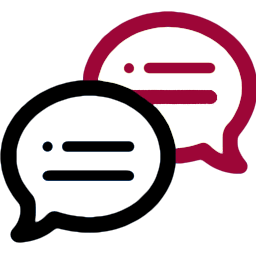What is Persuasion Theory?

Persuasion Theory is a mass communication theory that deals with messages aimed at subtly changing the attitudes of receivers.
The concept of Persuasion has been developed between the 1940s and 1950s after studies aimed at defining the optimal persuasive effectiveness of Propaganda, being it political or an advertising campaign. Like the Hypodermic Needle Theory, it considered audiences passive although the scope of a campaign switched from manipulation into persuasion. Researches on Limited Effects of mass communication demonstrated that messages are successful only if they embed the same opinions of their receivers. Therefore, the focus of any campaign has to be on individual psychological factors.
Unlike the Hypodermic Needle Theory, Persuasion Theory considers the Stimulus-Response model as interposed by a filter: individualís specificities, i.e. psychological characteristics of an individual. In this perspective, persuasive messages are thus able to activate an attitude change that can modify behaviors of consumers, voters and individuals in general.
According to Persuasion Theory, the communication process consists of a three phase model: Communication-Attitudes-Behavior. See also the communication process of: Limited Effects Theory and the Two-Step Flow Model. Unlike the Play Theory of Mass Communication, the concept underlying persuasion is that information is provided to influence receiversí behaviors. Once they had developed the concept of persuasion, researchers on Persuasion Theory focused on the audiences and the content of messages.
Audiences in Persuasion Theory
4 psychological factors of audiences have been identified:
- An audience is interested in getting information. To reach a bigger audience (including those who seem to be not interested in certain information at that moment) the message has to be designed to capture peopleís attention.
- Selective exposure. People are more interested in a message if it supports the same opinions and ideas that they already have.
- Selective perception. Audiences select information that is right for them, and a message can be voluntarily misunderstood or simply not caught if audiences havenít chosen to receive that piece of information. A receiver perceives opinions embedded in a message according to variable assimilation effects depending upon:
- Selective memorization. Opinions transmitted by a message will be better memorized if they are coherent with those of receiversí. There is also a link between the message length and its memorization in a receiver's mind: the longer a message is, the more effective the persuasion on the receiver will be. This statement, in media literature, is supported by 2 thesis: A) Bartlettís Effect: a longer message requires more time for a receiver to research and select opinions coherent with his mindset. B) Latent Effect: as time goes by from the reception of a message, receivers tend to forget the source and remember only the content of the message. Latent effect is exploited in case of communicators with low credibility. Compare with: Sleeper Effect.
Messages in Persuasion Theory
Regarding the message, Persuasion Theory identified 4 factors that facilitate and reinforce the persuasion process:
- The credibility and reputation of the communicator. It implies the acceptance of the message by a receiver: the level of persuasion is low if the producer of the message is considered not credible or reliable.
- The order of statements. In this respect there are two different schools of thought: some consider it more effective to put opinions supporting a defined position at the beginning of the message transmitted (primacy effect); others sustain the opposite (regency effect).
- Completeness of statements. If receivers are not in favor of a certain opinion, the persuasion increases when a message contains both supporting and contrasting statements regarding the opinion. If receivers agree on a certain opinion or are not knowledgeable or educated, it is better a message includes only pros of the opinion supported. In any case, it has negative effect in terms of persuasion if any relevant topic about an opinion is omitted in the content of the message.
- Announcement of conclusions. If a receiver is interested in a message it is better not to barely state the conclusions of the message, but to leave them implicit.
Persuasion Formula
Following a rational approach to persuasion a scientific formula has been identified. Values, Beliefs and Motivation are key generators of peopleís attitudes; while attitudes influence behaviors.
Value + Beliefs + Motives = Attitudes → Behavior
Application of Persuasion Theory
Persuasion Theory can be applied in:
- Politics: to promote certain candidates, persuade voters to switch their preference, convince masses about needed changes or about the validity of certain political commitment for society.
- Business: in advertising, to position products or services in consumersí mind, to persuade prospects to switch supplier, to create a need for new products, to sustain sales of cash cows businesses, to change organizational culture, to support or implement a change project.
- Conflicts and negotiations.
Steps in Persuasion Theory. Process
- The first phase of the application of Persuasion Theory requires an audience analysis to determine beliefs, values, motives and attitudes on a selected topic. It is common in this phase to make use of surveys, interviews, or applied knowledge of the audience.
- The second phase requires the communicator or the message (if that is the purpose of the communication) to change an attitude. There are possible two ways: 1) Try to change a belief. 2) Modify values or motives that drive an audience to mature a belief. This is much more difficult then changing a belief as values and motives play a key role in a individual's identity. What can be more easily done is the attempt to add a new value or motive.
Purposes of Persuasion
It has been proven that persuasion works well only if its purposes are realistic, taking into account an audience values, beliefs, motives and attitudes. Persuasion can be effective to achieve the following 5 main purposes.
- Creating Uncertainty. In case a communicator is faced with an audience who is strongly opposed to her view, the most viable way is to destroy some certainties in the audience mind. This scenario is typical of audience with closed mentality. What is achievable in such situation is a decrease of comfort with a defined audience attitude.
- Reducing Resistance. When an audience opposition to the communicatorís view is moderate it is possible to move an audience from a negative position to a neutral one. This is often achieved by asking only to accept the validity of the communicatorís opinion, even if audience doesnít endorse it.
- Change Attitude. If a communicator is faced with a neutral and open-minded audience, not strongly committed to any attitude, this goal is accomplishable.
- Amplify Attitude. This applies in situations where an audience is already moderately favorable to the persuader's view. It would be adequate to design a message aimed at reinforcing the validity of an opinion to sustain the current attitude and prevent competitor persuaders to influence an audience already conquered.
- Gain Behavior. In the presence of an audience strongly favorable to a persuader's position, the goal is to get those people to take actions in line with the shared attitude. Typical examples are brainwash to militaries and sales people: even though they already are convinced on an attitude, it is needed to reinforce their commitment in order to make them act. It is can be expected from such audiences that they will persuade less convinced or weaker individuals via word-of-mouth.
Strengths of Persuasion Theory. Benefits
The main advantage of Persuasion Theory is that it offers cost-effective approaches for various uses. It can help in many different kind of situations: from resolution of conflicts to solve organizational, advertising, sales and marketing issues, but can also help in interpersonal relationships.
Limitations of Persuasion Theory. Disadvantages
An authoritative source of limitations of Persuasion Theory is a book "Power and Persuasion: Ideology and Rhetoric in Communist Yugoslavia: 1944-1953" from Carol S. Lilly. The author analyzed the most frequently used Persuasive Techniques to sustain a long-term cultural transformation of society. Lillyís conclusions are: 1) Persuasion is most effective when a communicator builds on existing values and beliefs. The attempt to change people's values or create new ones has proven to be highly ineffective. It is often impossible to radically transform an existing culture. 2) Since persuasion is predominantly utilized in newspapers, radio, television, education and arts, those who donít enjoy these tools are less likely to be persuaded.
|
Forum about Persuasion Theory.

|
Components of Effective Persuasion Capability
Described as oneís ability to intentionally and successfully influence another person in order to overcome another personís resistance, Hargie (2011) defines three important components of effective pe...
 4 |
|
🔥
|
Persuasion Theory in Political Elections
How do political parties use Persuasion Theory as a means of having electorates vote them into power during an election?
Will a politician's ability to persuade the electorates earn him their votes o...
 3 |

|
Hypothesis of Persuasion Theory?
Salam everybody
Thank you so much, you helped me a lot in my thesis.
What is the hypothesis of the persuasion theory? I didn't find it....
 1 |
|
|
|
Courses about Persuasion Theory.

Beginners Course
|

Advanced Course
|

Course for Experts
|
|
|
|
The best, top-rated topics about Persuasion Theory. Here you will find the most valuable ideas and practical suggestions.
|
|
|
Advanced insights about Persuasion Theory. Here you will find professional advices by experts.

Consultancy Tips
|

Teaching Tips
|

Practical Implementation Tips
|
|
|
|
|
|
Various sources of information regarding Persuasion Theory. Here you will find powerpoints, videos, news, etc. to use in your own lectures and workshops.
|
|
|
Useful tools regarding Persuasion Theory.

News
|

Videos
|

Presentations
|
| |

Books
|

Academic
|

More
|
|
|
|
Compare with: Framing | Persuasion Techniques
|
|
|


